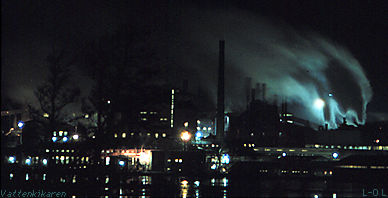 |
 |
 |
Problems and expectations
Some discharge contains compounds that are important, so that certain organisms, for example plants, can photosynthesise, mainly nitrogen and phosphorus. Undue pressure from these nutrients can cause over-fertilization (eutrofication) and result in extreme environmental changes. These pressures originate mainly from agriculture, sewage and the fallout of airborne pollutants. In the open masses of water (pelagial), the effects of over-fertilization are often seen in the rapid reproduction of plankton. In shallow water and bays, the effects are seen in the increase in the numbers of thread-like and rapidly growing algae taking over. Both small and large algae end up on the bottom, where decay can result in a lack of oxygen and the production of poisonous hydrogen sulphides. But "the race has not yet ended". In many areas major improvements have been made to reduce the discharge of nitrogen and posphorous compounds. Changes within agriculture, sewage treatment and automobile exhaust control for example, either by legislation or increased consciousness have helped. Different initiatives have been taken to try and find methods to utilize these nutrients, for example, methods to harvest algae in choked-up bays and use it to fertilize fields. Though, in the long run, we must change our living habits so these compounds circulate effectively and the large scale spreading of poisons ends.
|
||||
| A splendid outing ? | |||||
| Problems and expectations | |||||
| ”It was better before" | |||||
| Seawater and soluble salts | |||||
| The sea moves | |||||
| Coastal waters are close to us | |||||
| What is eutrofication? | |||||
| Sources of over-fertilization | |||||
| How the open masses of water are effected | |||||
| How shallow bays are effected | |||||
| What can we do? | |||||
| Alga harvest | |||||